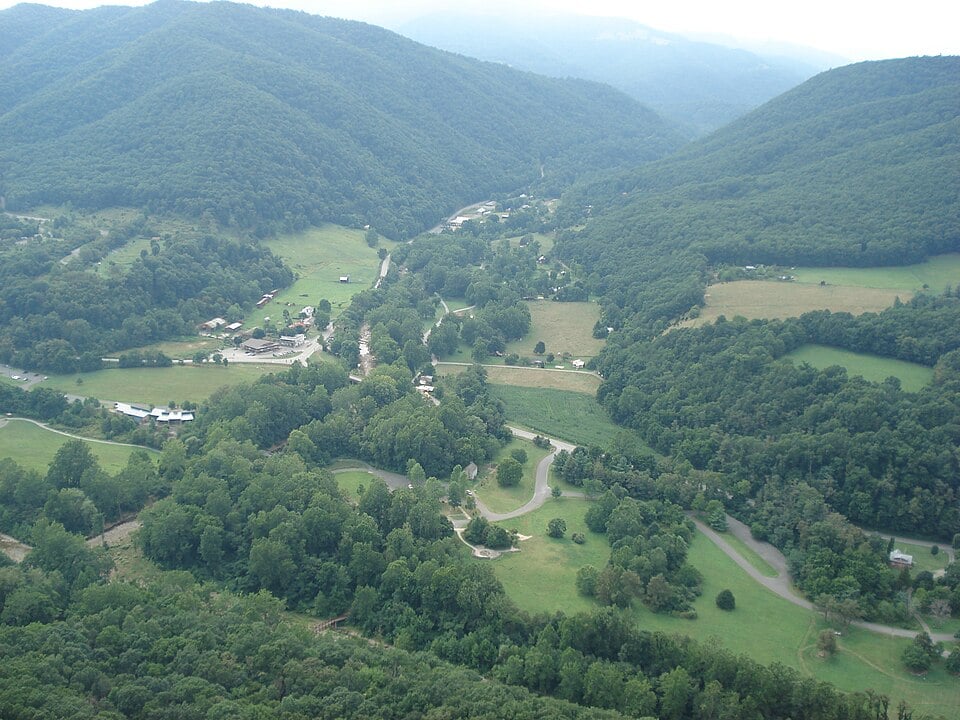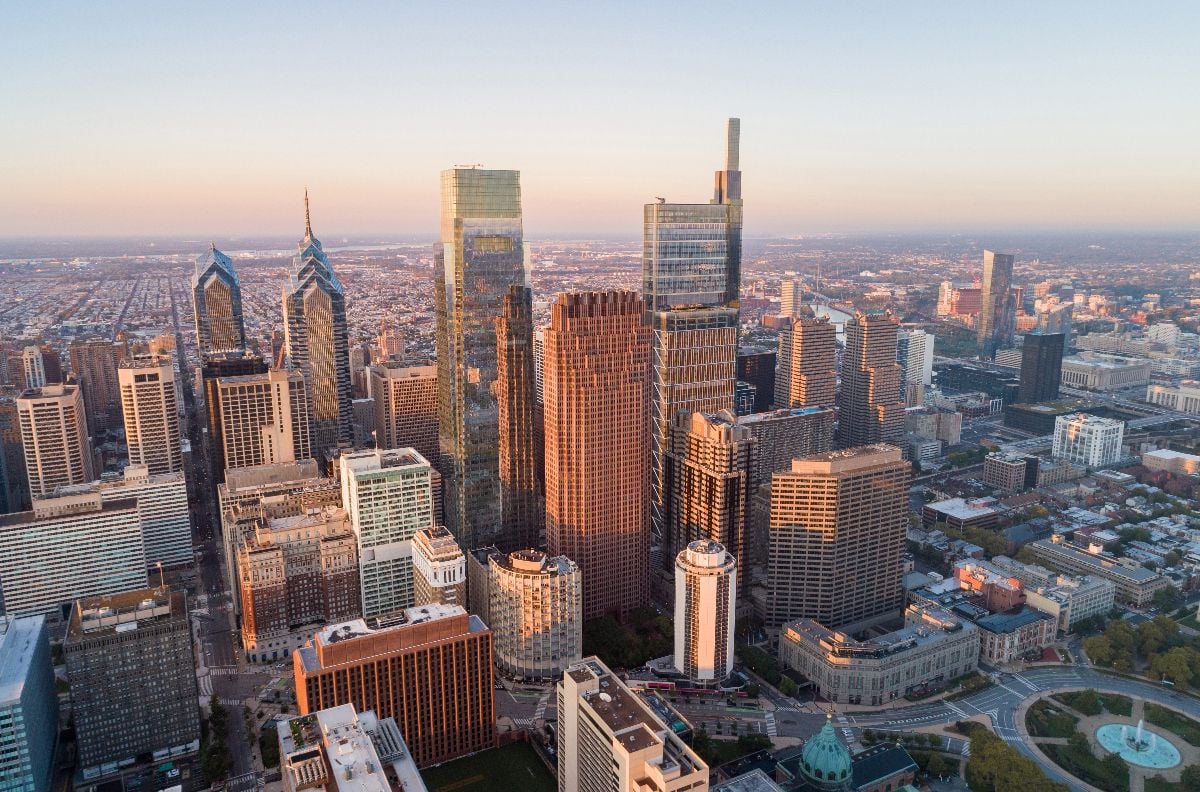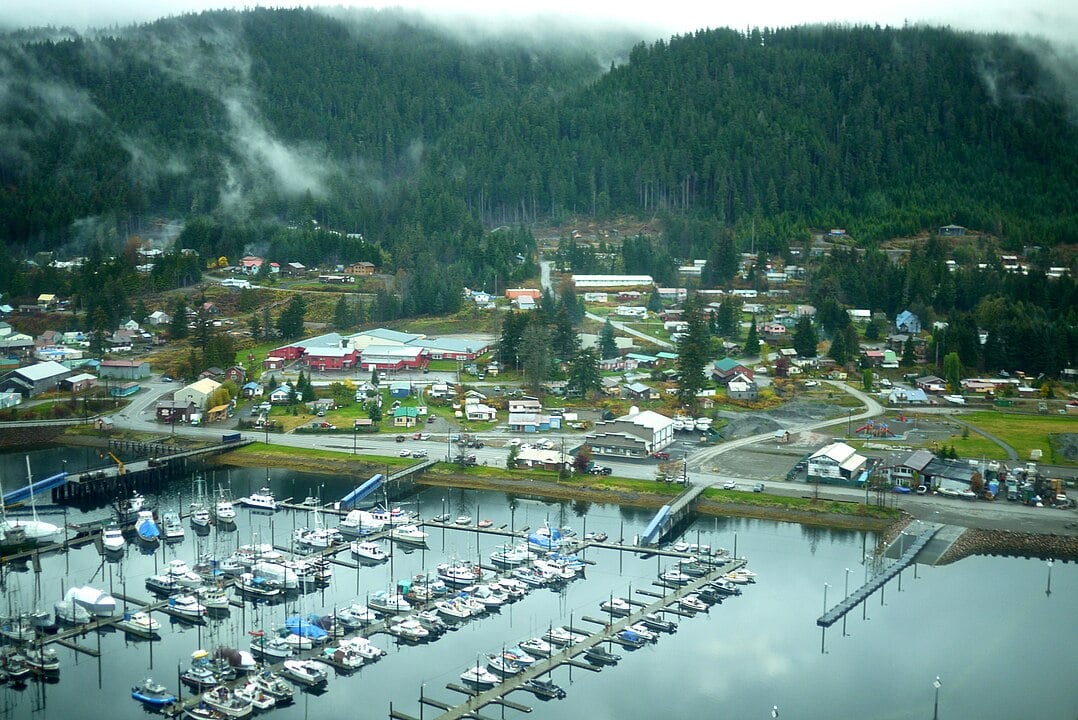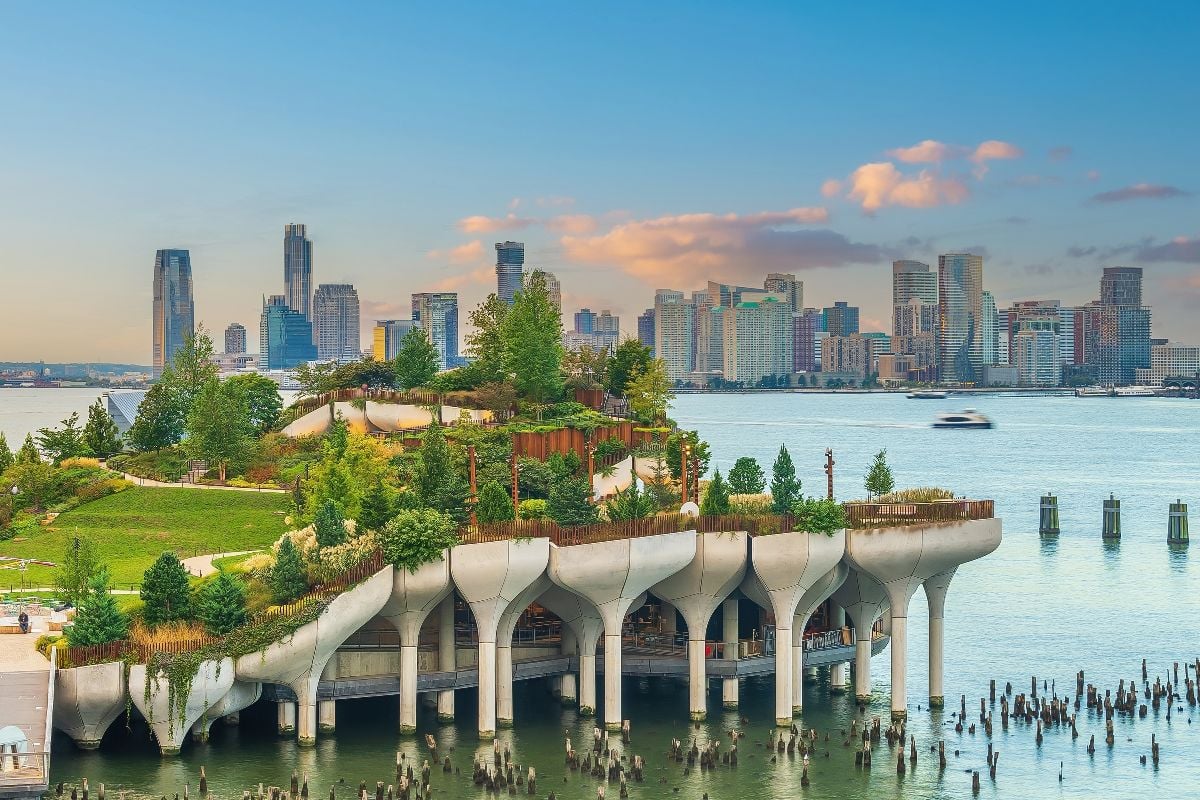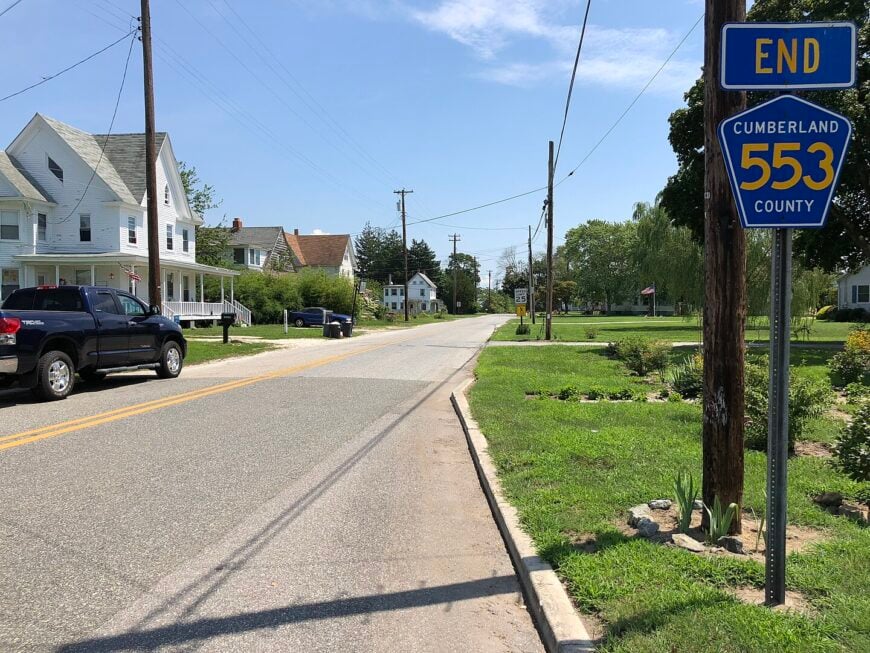
South Jersey’s quiet corners often hide in plain sight, tucked between cedar swamps, salt meadows, and forest lakes that most travelers speed past on their way to the beach or the city. Our team set out to find the hamlets where silence still wins and porch lights outnumber streetlights.
The twenty five places below welcome visitors with winding dirt lanes, wildlife calls at dusk, and night skies bright enough to spot the Milky Way.
Each has its own rhythm, shaped by cranberry harvests, oyster boats, or family vineyards, yet all share a buffer of woods, water, or fields that keeps them comfortably apart from busier destinations.
Think of this list as a road map for anyone who values space and stillness within driving distance of Philadelphia, New York, or Baltimore. Pack a light sweater, charge the phone just in case, and head south; there are miles of quiet waiting.
25. Batsto – Historic Mill Town in the Pines

Hidden deep in New Jersey’s Pine Barrens, Batsto feels like a forgotten village held in the quiet arms of the forest. Surrounded by Wharton State Forest’s vast woodlands, it’s far from cities and modern roads, preserved as a piece of early American life.
Old mills, a mansion, and a general store still stand, whispering stories from the 18th and 19th centuries. Visitors hike the Batona Trail, paddle the Mullica River, or explore historic buildings where blacksmiths once worked.
Seasons transform the landscape—vibrant in fall, hushed in winter. Once a hub for bog iron and glassmaking, Batsto now survives as a living museum. It’s the kind of place where time pauses, and the forest does the talking.
Where is Batsto?

Batsto, New Jersey lies deep in the heart of the Pine Barrens, nestled within Wharton State Forest in Burlington County. It’s about 8 miles east of Hammonton and 45 miles southeast of Philadelphia, reached by County Route 542 as it winds through flatwoods, wetlands, and old cranberry bogs.
The drive slips beneath towering pines, past rustling reeds and still lakes, until the modern world fades behind you. It’s a place where history lingers in the quiet, and the forest feels like it’s held its breath for centuries.
24. Estell Manor – Forest Edge with Revolutionary Roots

Tucked deep in the Pine Barrens, Estell Manor is surrounded by dense forest and bordered by the Great Egg Harbor River, making it feel far removed from city life. With fewer than 1,700 residents spread across miles of quiet land, solitude comes naturally here.
The town’s trails wind past swamp boardwalks, glassworks ruins, and remnants of wartime munitions buildings. Visitors hike, paddle, or stop by the Warren E. Fox Nature Center to glimpse the area’s layered history.
Seasons shift gently—wildflowers in spring, golden leaves in fall, and soft snow in winter. Conservation and quiet tourism now shape its rhythm. It’s the kind of place where the woods feel like they’ve taken back what once was.
Where is Estell Manor?

Estell Manor, New Jersey lies in southeastern Atlantic County, surrounded by the quiet woodlands of the Pinelands and Wharton State Forest. Just 3.5 miles south of Mays Landing and about 45 miles from Atlantic City, it’s reached by Route 50 and narrow county roads that weave through wetlands and pine groves.
The drive slows as the trees thicken and signs of town life fade. It’s a place where history lingers in crumbling ruins, and the forest feels untouched by time.
23. Mauricetown – Bayside Elegance and Ghost Stories

Perched above the Maurice River, Mauricetown feels like a quiet remnant of a bygone era, tucked away behind trees and bypassed by busy roads. With just over 400 residents and streets lined with 18th- and 19th-century homes, it carries the stillness of a preserved maritime village.
The town invites slow walks past historic houses, riverside views, and the occasional visit to its small museum or antique shops. Locals fish, kayak the marshes, or reflect on its shipbuilding past at the Captain Edward Compton House.
Once a hub for oystering and coastal trade, its economy now leans on history and heritage. It’s the kind of place where the river moves slowly—and so do you.
Where is Mauricetown?

Mauricetown, New Jersey is a small riverside village in Cumberland County, perched above the Maurice River and bordered by salt marshes on nearly all sides. About six miles from Delaware Bay and 40 miles southeast of Philadelphia, it’s reached by Route 47 and quiet county roads that wind past farmland and tidal flats.
The drive eases into a cluster of historic homes where the river moves slow and traffic is rare. It’s a place where the marshland breathes quietly, and time seems to drift like the tide.
22. Leesburg – Pine-Fringed Outpost Near the Bay

Set along the Maurice River in rural Cumberland County, Leesburg is a quiet village edged by woods, marsh, and slow-moving water. With under 600 residents and little traffic, it feels far removed from the pace of modern life.
Historic homes and old storefronts line the streets, whispering traces of its shipbuilding past. Locals fish the river, walk wooded paths, or simply take in the stillness of their surroundings.
Seasons pass gently here, each one softening the town in a different way. It’s the kind of place where time drifts—unhurried, like the river itself.
Where is Leesburg?

Leesburg, New Jersey is a quiet community in Maurice River Township, Cumberland County, set along the banks of the Maurice River near Delaware Bay. Located about six miles from the bay and 40 miles southeast of Philadelphia.
It’s reached by Route 47 and county roads that wind through farmland and salt marsh. The drive grows quieter as the road narrows and the landscape opens. It’s a place where the river flows slow and the silence feels natural.
21. Eldora – Tiny Hamlet with Tidal Charm

Tucked within Cape May County’s Pine Barrens, Eldora is a quiet hamlet bordered by wetlands and forest, with no true downtown and few neighbors in sight. It feels removed, surrounded by still woods and salt marsh that hush the world around it.
Trails at the Eldora Nature Preserve lead through pine-oak forest and meadow, offering peaceful hikes and glimpses of rare butterflies and birds. Visitors explore Pickle Factory Pond or trace the quiet history of its past in paper and pickle production.
Conservation and eco-tourism now shape the town’s rhythm. It’s the kind of place where the forest feels old—and the quiet feels complete.
Where is Eldora?

Eldora, New Jersey is a small hamlet nestled within Dennis Township in Cape May County, perched just off New Jersey Route 47 amid the coastal edge of the Pine Barrens. Located roughly four miles southwest of Belleplain and just a few miles from the Delaware Bay shoreline, it sits about 40 miles southeast of Atlantic City.
To reach Eldora, you turn off the main highway onto quiet local roads threading through flatwoods and tidal marshes, where the forest canopy steadily thickens and nearby farms fade from view. It’s a place where the hush of the pines feels deep and unhurried—quiet enough to soothe, and remote enough to feel apart from time.
20. Woodbine – Forgotten Borough in the Pines

Surrounded by the vast Pine Barrens, Woodbine feels quietly tucked away, buffered by forest, wetlands, and old cranberry bogs. Though close to U.S. Route 9, its wooded edges and low population give it a sense of deep calm.
The town blends history and stillness—visitors stroll quiet streets, explore the Sam Azeez Museum, or paddle through nearby waterways. Birdsong and pine scent fill the air in warmer months, while winter brings a deeper hush.
Farming and conservation shape its pace, alongside a few small institutions. It’s the kind of place where the trees feel close—and time moves gently around them.
Where is Woodbine?

Woodbine, New Jersey is a small borough in Cape May County, set inland within the Pine Barrens of South Jersey. It lies about six miles north of Belleplain State Forest and roughly 35–40 miles southeast of Philadelphia, reached by Route 47 and County Road 550 winding through pine woods and wetlands.
The drive passes farm fields and forest edges, growing quieter as you near the town’s modest grid and small municipal airport. It’s a place where the hush of the woods feels intentional, and time settles into the stillness under the trees.
19. Port Elizabeth – Riverside Hamlet with Colonial Roots

Tucked along the Maurice River and bordered by Pine Barrens and wetlands, Port Elizabeth feels quietly removed from the modern rush. With under 300 residents and little through traffic, it offers a sense of stillness shaped by nature and time.
Visitors kayak the river, hike nearby forest trails, or wander past historic spots like Lee Hall and an old glassworks inn. Spring and fall bring soft color, while winter deepens the quiet.
Once a port town, it now moves to a slower rhythm rooted in conservation and heritage. It’s the kind of place where the river slows—and you follow its lead.
Where is Port Elizabeth?

Port Elizabeth, New Jersey is an unincorporated community in Maurice River Township, set along the tidal Maurice River in Cumberland County. About six miles from Delaware Bay and 40 miles southwest of Philadelphia, it’s reached via Route 47 and quiet country roads that wind through pine woods and salt marsh.
The drive shifts from busy routes to still, tree-lined lanes as you near a cluster of old homes and river wharves. It’s a place where the water moves slow and the quiet seems to settle in for good.
18. Petersburg – Hidden Fields Behind Ocean View

Tucked within Cape May County’s Upper Township, Petersburg is a quiet hamlet with fewer than 300 residents and no real commercial center. Surrounded by pine forest and marshland, it feels gently hidden—removed from development and softened by time.
The vibe is hushed and historical, with weathered homes, quiet roads, and the occasional steeple rising through the trees. Locals fish calm waters, walk wooded trails, or stop by the small community library.
Spring brings wildflowers, and fall reflects gold in the tidal creeks. Once tied to farming and river trade, today it leans on tradition and quiet living. It’s the kind of place where time slows—and you’re glad it does.
Where is Petersburg?

Petersburg, New Jersey is a quiet community in Upper Township, Cape May County, set inland among salt marshes and wooded farmland. About six miles west of the Delaware Bay and 40 miles southeast of Philadelphia, it’s reached via Route 50 and local roads that wind past fields and rail crossings.
The drive narrows into calm, pine-lined lanes leading to a cluster of historic homes. It’s a place where the noise fades and the stillness feels like it’s always been there.
17. Tuckahoe – Rail-Era Hamlet Near the Pines

Hidden within the Pine Barrens of Cape May County, Tuckahoe is a quiet village of under 200 residents surrounded by marsh, forest, and winding riverbanks. Though a few rural roads connect it outward, the surrounding landscape keeps it hushed and apart.
The air is filled with birdsong and briny pine, and the pace feels entirely unrushed. Locals hike or birdwatch in the Tuckahoe Wildlife Management Area, paddle along the river, or wander dike trails through marsh and meadow.
Once shaped by farming and trade, the town now leans into conservation and quiet nature tourism. It’s the kind of place where the wild feels close—and time follows the rhythm of the land.
Where is Tuckahoe?

Tuckahoe, New Jersey is a small unincorporated community in Upper Township, set inland within Cape May County’s Pine Barrens. About six miles northwest of Corbin City and 40 miles southeast of Philadelphia, it’s reached via Tuckahoe Road off Route 50, winding through farmland and marsh.
The road narrows as the landscape softens, and traffic gives way to stillness. It’s a place where old rail lines and quiet wetlands feel like part of the rhythm of the land.
16. Norma – Quiet Farms in the Vineland Shadows

Tucked into Pittsgrove Township, Norma is a quiet hamlet with fewer than 300 residents, surrounded by farmland and forest, far from major highways. With no formal downtown, it feels gently hidden—more whispered than marked on the map.
The village holds a deep rural history, from Jewish farming roots to its long-standing post office and peaceful fields. Locals paddle the nearby Maurice River, walk quiet country roads, or visit nearby vineyards and the quirky Palace of Depression.
The pace is slow, shaped by heritage and nature. It’s the kind of place where the land speaks softly—and you find yourself listening.
Where is Norma?

Norma, New Jersey is a small unincorporated community in Pittsgrove Township, Salem County, located at the junction of County Routes 540 and 638 just west of Vineland. About 38 miles south of Philadelphia and 40 miles northwest of Atlantic City, it’s reached via local roads that branch off U.S. Route 40.
Route 40 and wind through farmland and woods. The drive shifts from busy routes to quiet, tree-lined lanes, where fields and old homes replace storefronts. It’s a place where the quiet feels deep-rooted, and time seems to pass a little slower.
15. Mizpah – Pineland Holdout with Grit

Tucked within the Pine Barrens of Atlantic County, Mizpah is a quiet settlement with around 480 residents and no true downtown. Surrounded by forest and set back from major highways, it feels gently removed from the outside world.
The town carries traces of its past as a Jewish farming colony, with modest homes and open lots beneath the pines. Locals paddle Lake Lenape, walk shaded trails, or pick up fresh produce at Bertuzzi’s Market.
Each season brings its own hush—wildflowers in spring, gold in fall, stillness in winter. Today, Mizpah moves at the pace of rural life and memory. It’s the kind of place where the quiet comes easy—and stays.
Where is Mizpah?

Mizpah, New Jersey is a small unincorporated community in Hamilton Township, Atlantic County, tucked within the quiet reaches of the Pinelands. About 24 miles west of Atlantic City and 38 miles south of Philadelphia, it’s reached via U.S.
Route 40 and local roads that wind past cranberry bogs and sand quarries. The drive narrows into quiet, pine-shaded lanes where the noise fades. Originally founded as a Jewish agricultural colony, it’s a place where time drifts with the rhythm of the forest.
14. Fortescue – Bayside Solitude on the Edge

Surrounded by marsh on three sides and facing the Delaware Bay, Fortescue is a tiny fishing village with fewer than 200 residents and only one road in. The isolation is natural—salt air, open skies, and the quiet shuffle of tidal water define its rhythm.
Visitors come to fish from Fortescue State Marina, paddle winding creeks, or birdwatch along the marsh at Turkey Point. Life here moves with the tides—slow, steady, and tied to the water.
Once known for its fishing industry, Fortescue now leans on quiet tourism and conservation. It’s the kind of place where the shoreline feels like the edge of the world—and the stillness draws you in.
Where is Fortescue?

Fortescue, New Jersey is a tiny bayside community in Downe Township, Cumberland County, surrounded by salt marsh and bordered by the Delaware Bay. About 40 miles southwest of Philadelphia, it’s reached via Route 555 and a single road that winds through wetlands and wildlife areas.
The drive grows quiet as the land flattens and the water nears. It’s a place where the tides set the rhythm, and the stillness feels natural and complete.
13. Bivalve – Salt Dock Silence

Tucked along the Maurice River and bordered by salt marsh, Bivalve is a near-forgotten oyster port with fewer than 50 residents and one road in. Once the “oyster capital of the world,” it now stands quiet—rusted boats, empty sheds, and shell piles echoing its past.
The mood is hushed and reflective, with gulls overhead and the scent of brine in the air. Visitors explore the Bayshore Center, tour the schooner A.J. Meerwald, or walk the docks where history lingers.
Though the oyster trade faded, Bivalve now lives through conservation and quiet heritage tourism. It’s the kind of place where silence speaks—and the past never quite lets go.
Where is Bivalve?

Bivalve, New Jersey is a tiny riverside hamlet in Commercial Township, set at the mouth of the Maurice River where it meets Delaware Bay. About 40 miles southwest of Philadelphia, it’s reached via Route 553 and quiet roads that wind through salt marshes and tidal flats.
The drive ends at historic oyster docks and wide river views. It’s a place where the water moves slow, and the past lingers in the stillness.
12. Palermo – Tucked Between Townships

Nestled in Upper Township, Palermo feels tucked between pine forest, marsh, and winding rural roads despite its nearness to Route 9. The quiet here is shaped by trees and wetlands, softening the edges of modern life.
With about 3,100 residents, it moves at a slower rhythm—where the air smells of pine and salt, and shadows stretch long. Visitors paddle local creeks, birdwatch in the Barrens, or explore the 1830 Friendship School.
Once known for farming and even a Cold War radar station, it now leans on nature and small-town tradition. It’s the kind of place where the landscape leads—and you simply follow.
Where is Palermo?

Palermo, New Jersey is an unincorporated community and census-designated place in Upper Township, Cape May County, tucked into the inland edge of the southern Jersey Shore. Located about 14 miles northeast of Cape May Court House and roughly 35–40 miles south of Atlantic City.
It is reached via Route 9 or 47 with local lanes weaving through wooded areas and quiet residential pockets. The journey shifts from bustling coastal roads into tree‑lined suburban lanes where homes nestle behind pines and the pace slows. It’s a place where time drifts gently, and the hush of the inland pines feels like its heartbeat.
11. Clarks Landing – Marshside Stillness with a View

Just beyond Egg Harbor City, Clarks Landing lingers in the stillness of the Pine Barrens, where cedar swamps and salt marshes shape the land more than streets ever could.
With no true town center and a scattered population, it feels naturally veiled—its quiet broken only by bird calls and the rustle of pitcher plants. Visitors paddle the winding arms of the Mullica River, explore the Clarks Landing Preserve, or spot bald eagles hidden in tall reeds.
Old sand roads lead to untouched woods, and each season brings its own calm: golden marshes in fall, mirror-like floodwaters in winter. Conservation now defines its pace, guided by nature rather than clocks. It’s the kind of place where the land moves slowly—and welcomes you to do the same.
Where is Clarks Landing?

Clarks Landing, New Jersey is a quiet riverside spot in Atlantic County, nestled along the Mullica River within the Pine Barrens. About six miles southwest of Egg Harbor City and 40 miles from Philadelphia, it’s reached via Clarks Landing Road, winding through wetlands and forest.
The road narrows as the trees close in, leading to a handful of marshside homes. It’s a place where the river and woods seem to hold still, and solitude greets you at the edge.
10. Chatsworth – Heart of the Pine Barrens

Chatsworth counts barely 1,000 residents spread among sandy roads, cranberry bogs, and pitch-pine thickets. Visitors paddle Oswego Lake, stop at the White Horse Inn for pie, and hunt for ghost-town ruins hidden in the forest.
Cranberry and blueberry farming remain the economic backbone, with packing houses humming only during harvest weeks. No traffic lights, sparse cell service, and vast state-protected acreage seal the village off from suburban creep.
Locals rely on well water, trade gossip at the tiny post office, and watch meteor showers framed by trees instead of rooftops. The slow pace feels unchanged since the stagecoach era.
Where is Chatsworth?

The hamlet sits in Burlington County’s Pinelands core, about 30 miles east of Philadelphia as the crow flies. Surrounded by New Jersey’s largest contiguous forest, it lies beyond the reach of major highways except for two-lane Route 532.
Sand roads quickly narrow to single-track, discouraging through traffic and preserving calm. The closest rail station is an hour away in Hammonton, so arrival almost always involves a deliberate drive.
9. Belleplain – Lakeside Serenity in Cape May County

Roughly 600 people call Belleplain home, most clustered around the mirror-smooth waters of Lake Nummy inside Belleplain State Forest. Residents fish for pickerel, cycle along the CCC-built forest roads, and gather at the vintage ranger station for summer ice cream socials.
Small-scale forestry and seasonal campground jobs provide steady, if modest, income. Thick cedar groves screen the settlement from shore traffic rushing toward Wildwood and Cape May.
Nights bring owl calls and a crisp scent of pine, with only the soft glow of cabin windows cutting the darkness. Even on holiday weekends, campsites sell out more slowly here than at better-known parks.
Where is Belleplain?
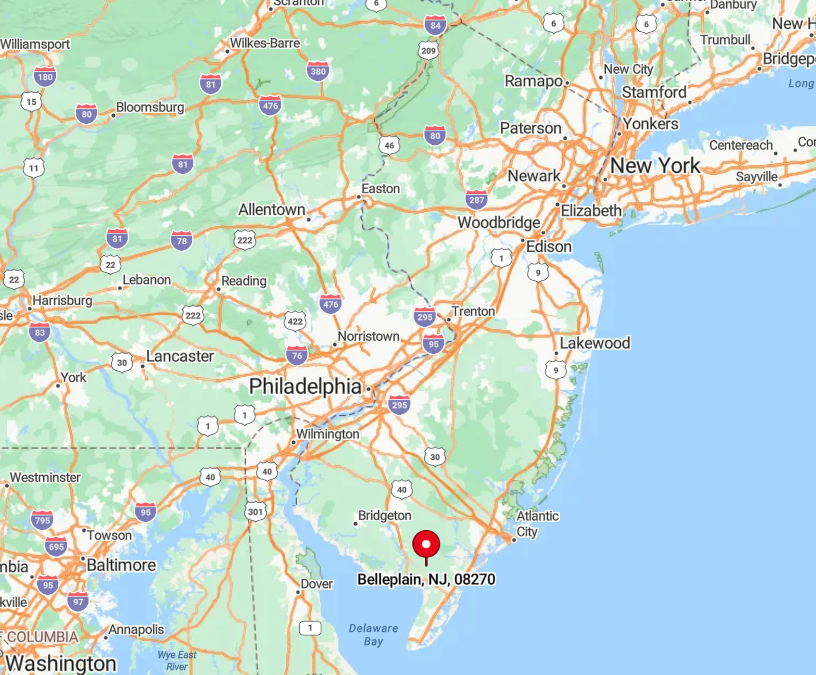
Belleplain rests in northern Cape May County, just west of the Garden State Parkway, yet hidden by ten miles of forest. Route 550 winds in like a ribbon, giving the community its only paved entry.
Few signs point the way, so first-timers often miss the turn and double back. Those who do find it discover that mobile reception fades and traffic noise vanishes within minutes.
8. Dividing Creek – Creek-Side Calm on the Delaware Bayshore

With a population near 450, Dividing Creek feels more like a large family than a town. Anglers launch skiffs into the brackish creek, and birders scan the adjacent wetlands for egrets and red knots. Commercial crabbing and small-scale oyster aquaculture still provide a livelihood for several docks.
Distance from any supermarket, absence of chain restaurants, and a single blinking light reinforce its end-of-road identity. Residents swap fresh catch at the volunteer firehouse on Friday nights. Sunsets paint the marsh copper, followed by a hush broken only by fiddler crabs clicking in the mud.
Where is Dividing Creek?

Located in Cumberland County’s Downe Township, the village sits twenty miles southwest of Millville near the terminus of County Route 553. Tidal flats border three sides, and the nearest bridge across the creek is five miles upstream, discouraging pass-through drivers.
The route in is a ribbon through farmland, then forest, eventually narrowing to a single lane across Spartina marsh. GPS loses accuracy, so seasoned visitors watch for the weather-beaten “Welcome to Dividing Creek” sign.
7. Heislerville – Bayshore Backwater Bliss

Heislerville lists about 200 year-round residents, many descended from the town’s original shipbuilders. Life centers around East Point Lighthouse, where locals picnic, cast for stripers, and count migratory snow geese.
Farming and seasonal wildlife tourism supply modest income, supplemented by work at the nearby state fish hatchery. Open fields, abandoned salt works, and a scattering of nineteenth-century homes on acre-plus lots give the village a wide-open feel.
Nights rarely see more than three porch lights at once, leaving stargazers unchallenged. The hush is deep enough that distant surf can be heard on still evenings.
Where is Heislerville?

The hamlet hugs the Maurice River’s mouth in Maurice River Township, Cumberland County. Only one paved access, East Point Road, snakes six miles from Route 47 before ending at the lighthouse.
Marshland hems in both sides, so detours are non-existent. Visitors often follow the fifth-generation farm signs rather than their navigation apps to stay on course.
6. Green Bank – River Bend Retreat in Burlington County

Roughly 800 people reside in Green Bank, clustered along a sweeping curve of the Mullica River. Canoeists glide past cedar stumps while history buffs tour the 1812 schoolhouse, one of New Jersey’s oldest. Forestry, small marinas, and eco-tour guiding keep the lights on for most households.
Surrounded by swamp and State Forest, the settlement stays isolated despite being less than fifteen miles from Atlantic City as the gull flies. The absence of commercial strips or streetlights protects its night silence. River mist at sunrise often erases everything beyond the nearest dock.
Where is Green Bank?

Positioned in Washington Township along County Route 563, Green Bank sits where the Mullica widens before meeting the bay. The road crosses a single narrow bridge, closed to trucks, which limits heavy traffic.
Thick wetlands on either side deter expansion and help muffle highway noise. Most visitors arrive by kayak or small powerboat, tying up at the public landing across from the old sawmill ruins.
5. Delmont – Pineland Prairie Quiet

Delmont’s population hovers around 700, spread across pastureland, orchards, and cedar brakes. Families pick up mail and gossip at the one-room general store that doubles as a deli. Light agriculture, landscaping, and state prison jobs in nearby Leesburg supply paychecks.
No street grid, plenty of wooded buffers, and a landscape too flat for tall buildings keep Delmont tucked out of sight. Evenings bring whip-poor-will calls and the scent of sweet pepperbush on the breeze. The pace pairs perfectly with rocking chairs and jarred lightning bugs.
Where is Delmont?

The village lies in Maurice River Township, a few bends south of Route 47. Dense pine stands flank every secondary road, and the nearest traffic signal is eight miles away in Millville.
Visitors exit the state highway onto County Route 616 and soon trade asphalt for gravel. The final mile passes soybean fields that seem to stretch forever, ending at the weathered clapboard church on Main Street.
4. Dorothy – Vineyard Vistas of Weymouth Township

Dorothy shelters just over 1,000 residents amid sandy lanes and five-acre homesteads. Weekend tasters sip chambourcin at Bellview Winery, while horse owners trot quiet trails under long-leaf pines. Grapes, equestrian boarding, and small produce farms dominate the local economy.
Its remoteness stems from a web of county roads that loop through the forest without connecting to major arteries, all while Atlantic City’s neon glows faintly on the horizon.
The only hum after dark is from crickets and the occasional tractor returning from a late harvest. School buses drive farther between stops here than almost anywhere else in the county.
Where is Dorothy?

Located in Atlantic County–adjacent to Cape May County, Dorothy sits west of Mays Landing and south of Buena. State Route 50 grazes the edge but offers no direct exit, so travelers must wind in along Tuckahoe and Weymouth roads.
Sandy soil discourages large development and keeps lot lines generous. The nearest bus or rail service is over fifteen minutes away, making the car the primary access.
3. Goshen – Meadowland Silence Near the Shore

Goshen claims around 300 inhabitants, many living in weathered farmhouses fronting endless marsh. Kayaks glide through Dennis Creek, and history fans photograph the 1850 Methodist church whose bell still rings on Sunday.
Small boat repair, shellfish harvesting, and artisan woodworking provide income for this tiny population. Sweeping meadows, a lack of retail, and back-road access all insulate the town from beach traffic two towns east. Even peak tourist season leaves Goshen’s single gas pump without a line. Herons outnumber people at sunrise.
Where is Goshen?
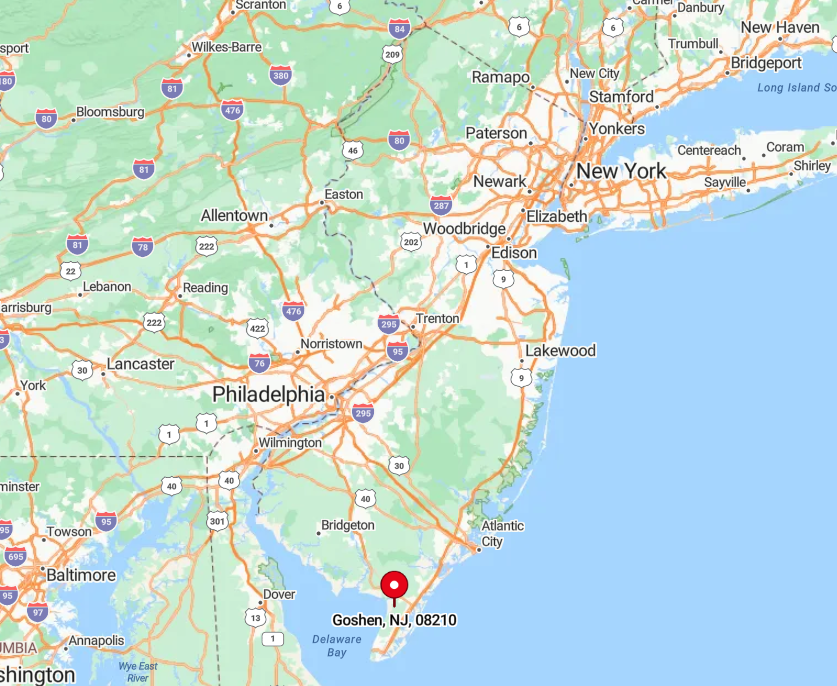
Nestled in Middle Township, Cape May County, Goshen lies off Route 47 between Cape May Court House and Dennisville. Marshland flanks both sides of the approach road, which is prone to tidal flooding and slows hurried drivers.
The closest Parkway interchange is fifteen minutes away, further preserving solitude. Visitors often rely on a hand-lettered sign pointing to Goshen Road to know they’re close.
2. Dennisville – Historic Hideaway in the Pines

About 870 residents live among Dennisville’s preserved cedar-shingled houses and towering oaks. Travelers tour the 1874 Dennisville Schoolhouse Museum, kayak Old Stage Creek, or attend the town’s legendary Christmas house tour. Carpentry, small hospitality outfits, and seasonal construction jobs drive the local paycheck.
Pines shield the grid of nineteenth-century streets from Route 47, muffling noise and keeping commercial sprawl at bay. Big front porches and deep yards create breathing room rarely found this close to the Atlantic. At night, frogs from nearby ponds provide the town soundtrack.
Where is Dennisville?
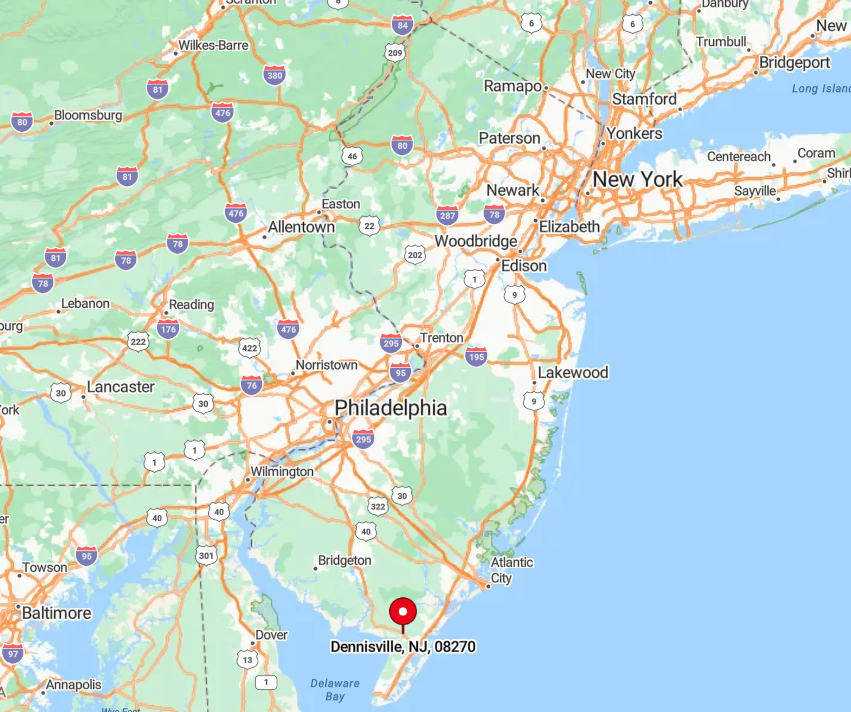
Sitting in Dennis Township, the village is five miles from Sea Isle City yet feels a world apart. Access comes via two county roads that wind through forest and cranberry bog.
The lack of a direct east-west highway keeps beachgoers on faster routes, sidestepping Dennisville entirely. Public transit is limited to a seasonal shuttle that runs twice a day, reinforcing the sense of seclusion.
1. Port Norris – Oyster Legacy and Open Skies

Port Norris houses close to 1,300 residents in wide-street blocks lined with Victorian homes once owned by oyster captains. Today, visitors tour the Bayshore Center’s restored schooner, sample fried oysters at the shack behind the marina, and watch bald eagles over the salt flats.
Modern livelihoods blend small-scale aquaculture, charter fishing, and wildlife refuge work. Endless salt marsh, a dwindling rail spur, and shuttered factories underscore the town’s distance from modern bustle.
Broad skies dominate the horizon, giving sunsets an almost prairie feel. Nightfall brings a stillness broken only by the distant rumble of an oyster boat engine.
Where is Port Norris?

Set on the Maurice River near its mouth with Delaware Bay, Port Norris sits in Cumberland County at the far end of Route 553. The nearest four-lane road lies fifteen miles north in Millville, and tidal wetlands hem the town on three sides.
Visitors often follow oyster-shell driveways bordered by cattails to reach the docks. Lack of regular bus or rail service means travel plans start and end with a car, adding to the feeling of arriving at the edge of the map.

